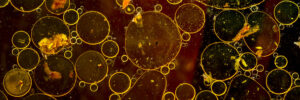
How to Screen for Transformation Products with SIRIUS
Detecting transformation products is crucial for environmental monitoring, as these byproducts can be more toxic and persistent than their precursor compounds. This tutorial walks you through using SIRIUS for a non-targeted combined precursor and transformation product screening, from generating a transformation product database to analysing LC-HRMS data in SIRIUS and validating results.








